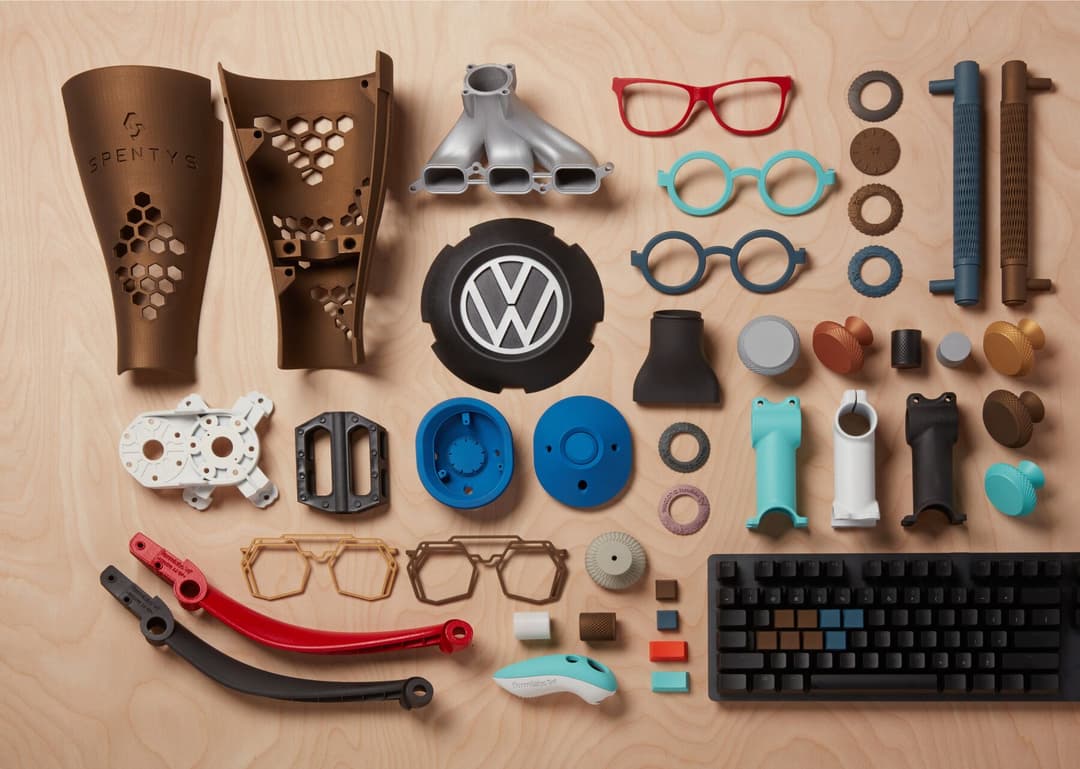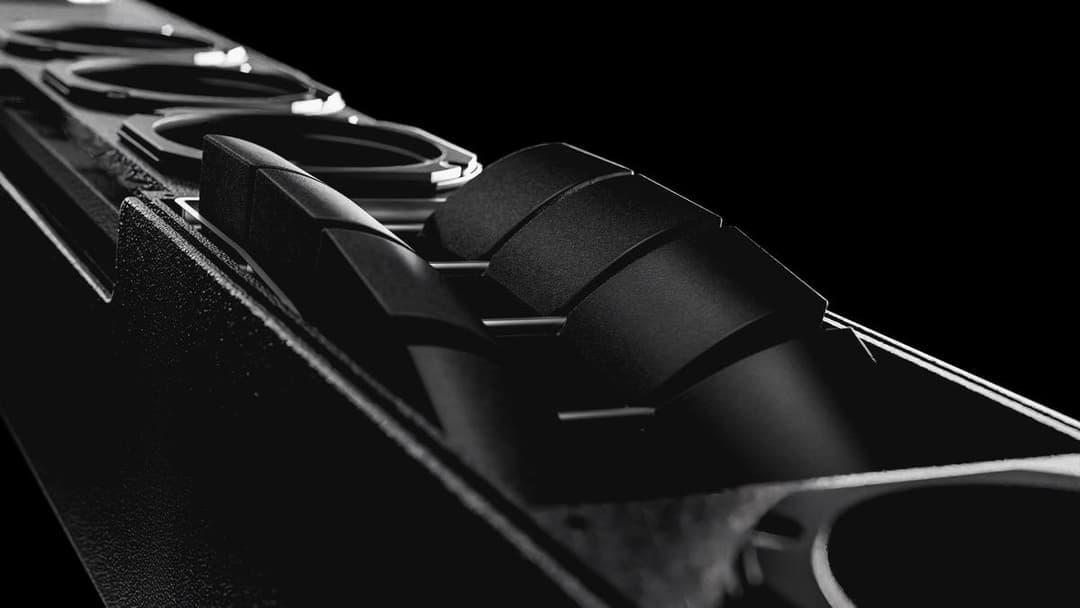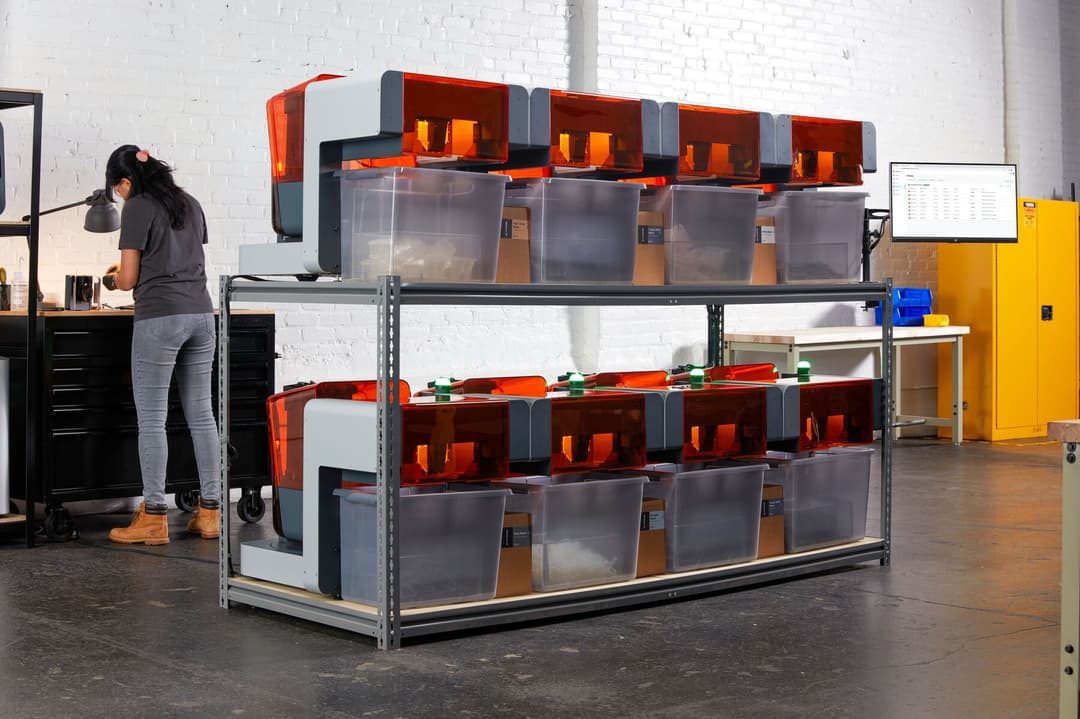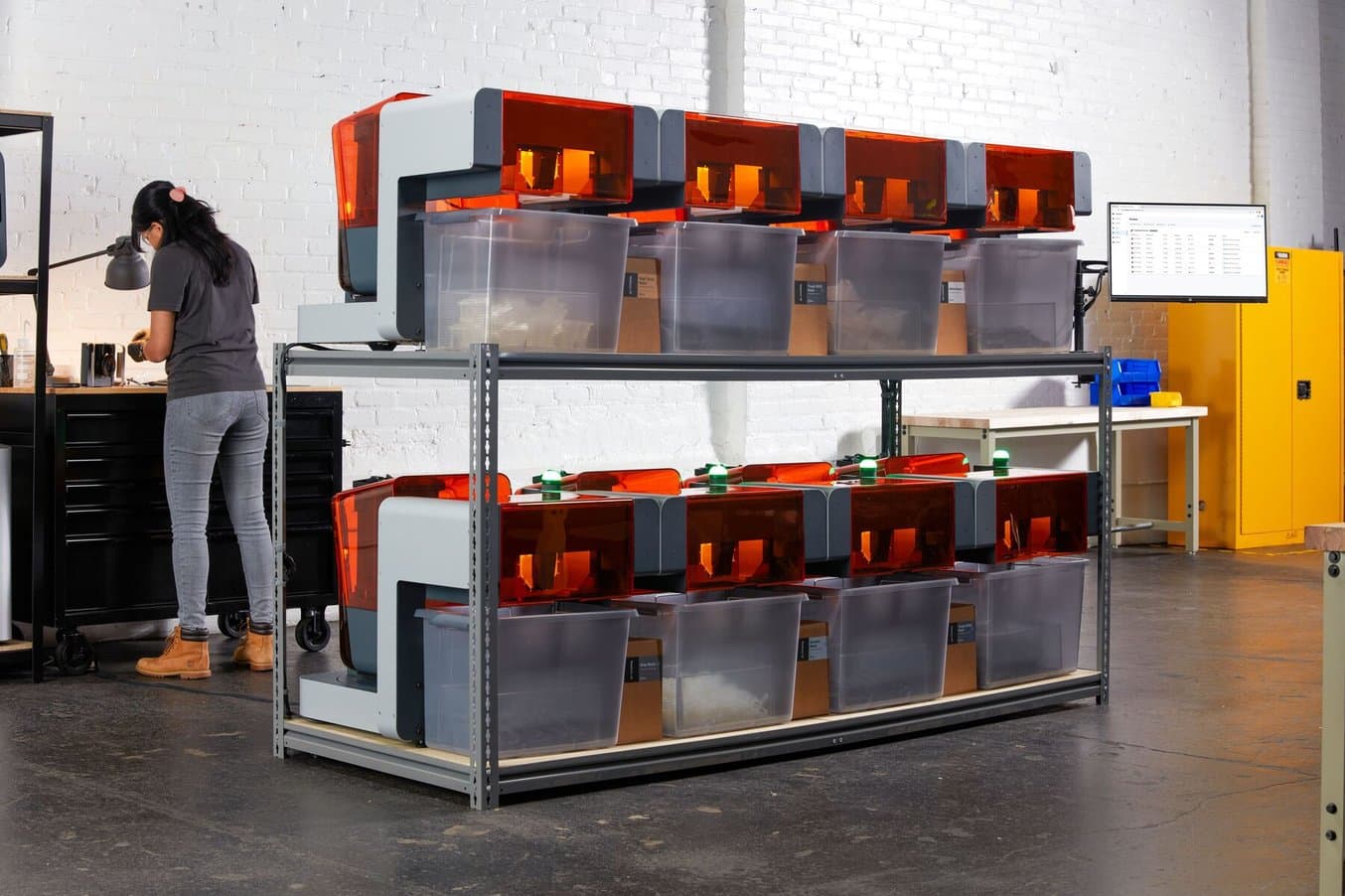
When it comes to a fast-paced and competitive industry like 3D printing, sometimes seeing is believing. To provide that tangible proof, Formlabs Manufacturing and Services Bureau (MSB) has 3D printed hundreds of thousands of sample parts and even end-use components for our printers. By printing at that volume, we’ve proven the production capacity of our own ecosystem. Now, we’re taking it one step further by supercharging throughput with the new Formlabs Automation Ecosystem.
Formlabs MSB has proven that using 3D printing for mass production is not only possible, but that with the Automation Ecosystem, it can be streamlined and cost-effective. The Form Auto printer hardware extension, Fleet Control suite of software features, and High Volume Resin System work in concert to scale up production without multiplying labor costs or space. “With Formlabs MSB mass producing parts, it’s the best way to ‘walk the walk,’ and use our machines in the way we hope other manufacturers can,” says Chris Pauwels, Manager of the Formlabs Ohio MSB.
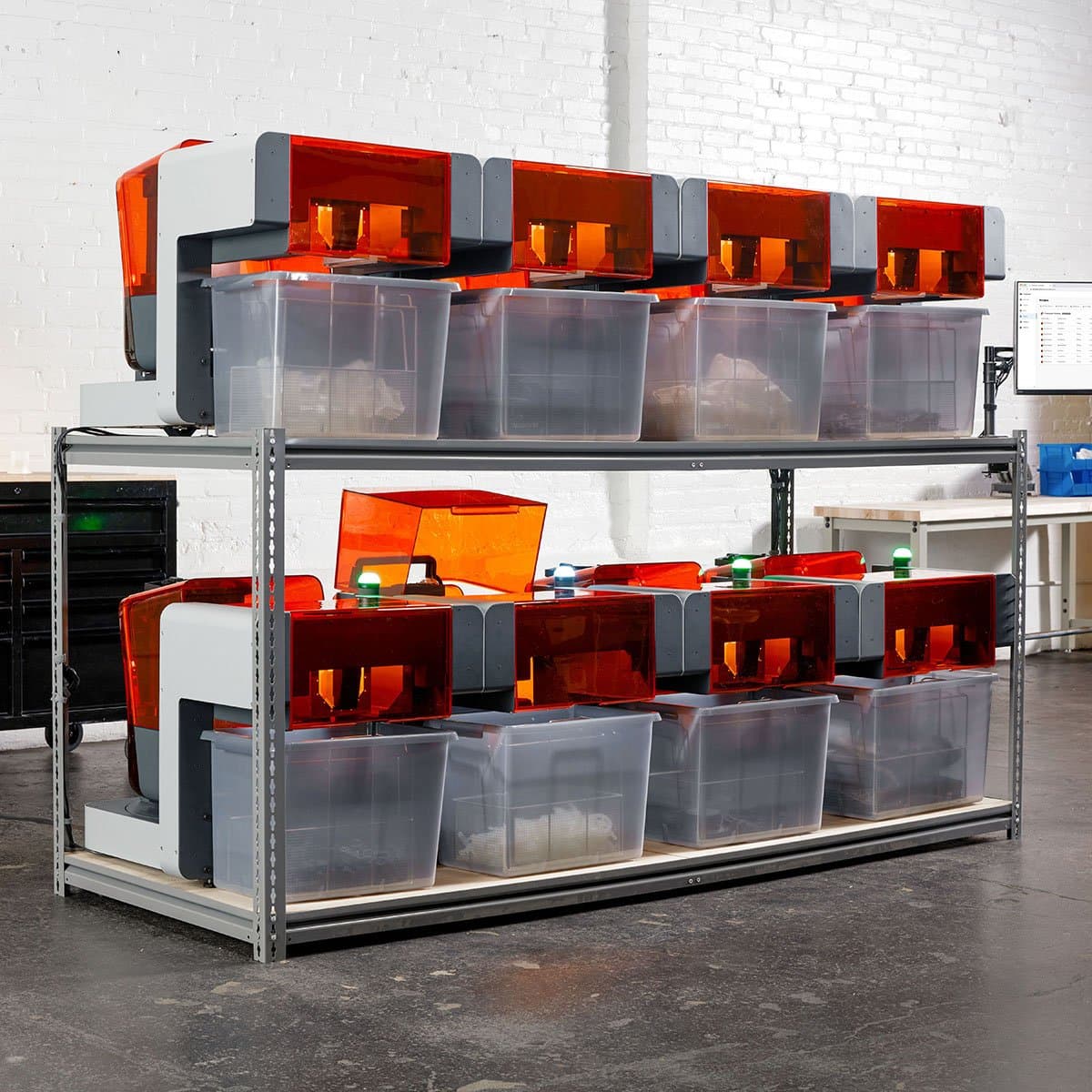
Calculating ROI for the Formlabs Automation Ecosystem
The Form Auto can increases productivity and efficiency, driving down your cost per part. In this whitepaper, we’ll walk through three manufacturing scenarios to explain cost per part and return on investment (ROI) calculations.
Samples and End-Use Production Components
Formlabs MSB is a production facility in Toledo, Ohio that houses 140 Form 3 Series stereolithography (SLA) printers and over 30 Fuse Series selective laser sintering (SLS) printers. “We print sample parts that customers request as part of their evaluation of a new printer purchase, but we also print parts that are used to then produce Formlabs devices like the Form Wash L, Form Cure L, Form 3L, and Fuse Series,” says Pauwels.
Formlabs engineers rely on our own SLA and SLS printers for both prototyping and producing the next generation of machines. Some parts were originally 3D printed as stopgap options during pandemic-era supply chain shut-downs, others because 3D printing is a less expensive alternative to injection molding in some cases. Being able to leverage the power of such an extensive SLA and SLS printer fleet allows Formlabs to produce large quantities of end-use parts and get our machines to market faster.
For each of Formlabs’ materials (there's over 40 of them) there is a standard printed sample part that anyone can request, whether they own a Formlabs printer already or not. The sample parts are indicative of the intended use case for each material, from medical drilling guides in our Surgical Guide Resin to functional gears printed in our Durable Resin.
The Challenge: High Volume, Multiple Touchpoints
With 140 SLA printers and over 40 SLA materials, managing the print facility requires meticulous oversight and constant monitoring. The facility maintains a rigorous schedule that optimizes printing and post-processing windows, making sure they align as much as possible with the employees’ workday. Formlabs Operations Excellence team member Andrew Crane has worked to optimize that schedule and print farm flow. “We have four teams, one with two groups for Form 3+ printers with different print queues, Form 3L printers, Fuse 1+ 30W printers, and a process test team… Our print queue occasionally hits 500 prints at a time,” says Crane.
Before the Automation Ecosystem, printers typically required touchpoints multiple times a day — priming a printer by loading a build platform and ensuring the right cartridge and tank were inserted, as well as removing the build platform to transfer parts to the Form Wash when the print was completed. Though each task takes under a minute, for a production facility with 140 SLA printers, the majority of a day is spent solely on these labor-intensive but low complexity tasks.
Doing the Work of Five Printers
With Form Auto and the Automation Ecosystem, these short but repetitive tasks are reduced drastically. Form Auto utilizes the quick release technology of Build Platform 2 to remove parts, then it reinserts the platform and primes the printer for a new job, eliminating two of the touchpoints previously necessary for an employee to complete. “It’s like having one printer do the work of five,” says Pauwels. The work of scraping parts off a build platform and washing each batch one at a time has been eliminated with the Build Platform 2 and Form Auto.
"Now when we come in the morning, there’s just one large bucket of parts from multiple jobs to put through the Form Wash L. We’re more productive with certain jobs because printers can finish and restart outside of working hours."
Chris Pauwels, Manager of the Formlabs Ohio MSB
Formlabs MSB employees have greater freedom to perform high complexity tasks with so much less of their time being taken up by part removal, printer priming, and single-batch washing. When parts finish overnight, or without employees on-hand, new prints can start automatically. At Formlabs MSB with Form Auto, printing doesn’t have to stop when the lights shut off for the night and during the weekend.
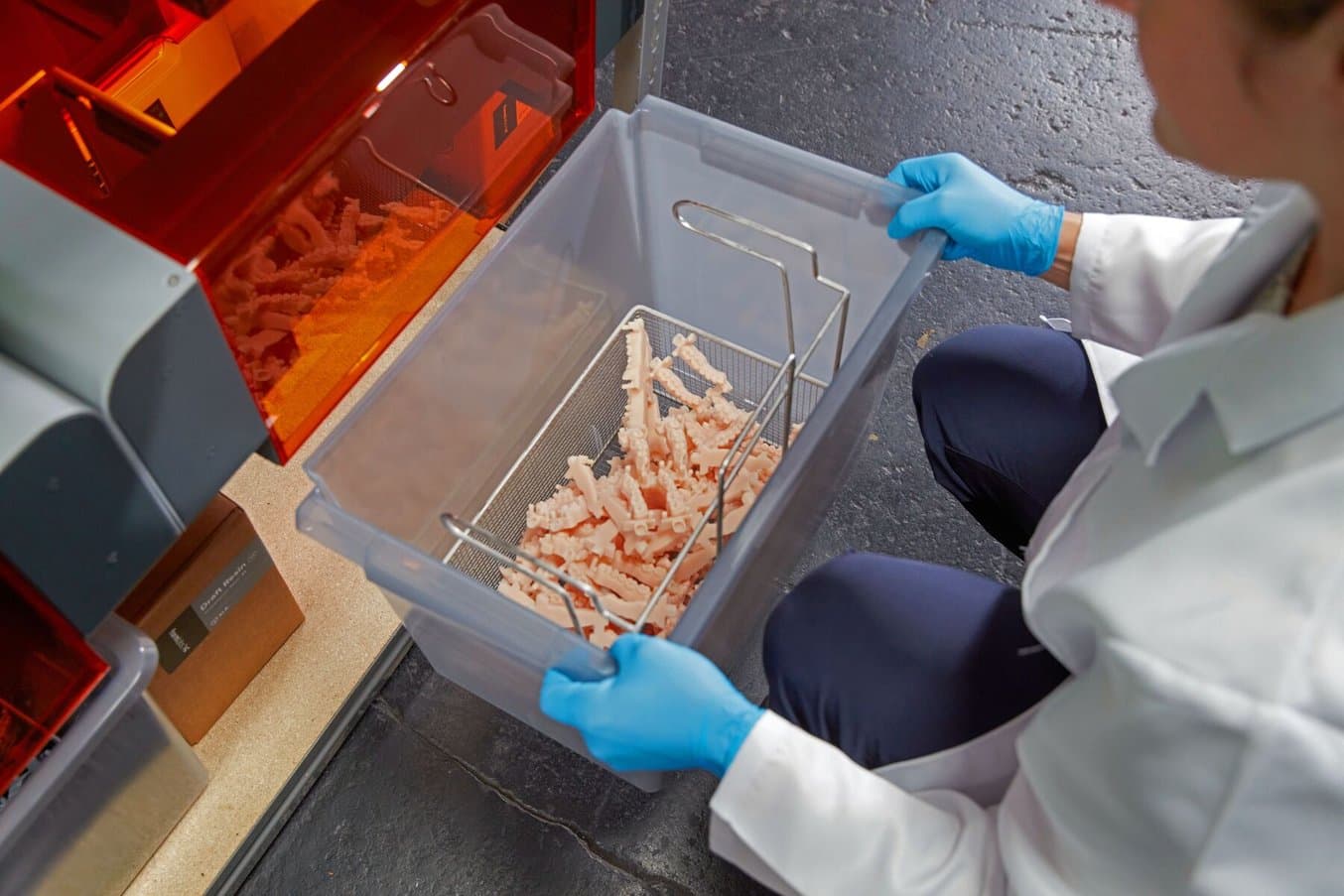
Formlabs MSB employees can arrive in the morning and post-process large batches of parts from multiple build volumes that finished overnight.
How Fleet Control Enables Complete Operational Excellence
Fleet Control is a suite of features in Dashboard that optimize how prints are queued, assigned, and scheduled in a multi-printer production environment. At Formlabs MSB, there are 140 SLA printers and 40 resins, so any chance to organize and optimize operations has to be quickly seized upon.
“Fleet Control has significantly decreased managerial input into the printing operation. We can slip in custom jobs effortlessly into the print queue, and our technicians can worry less about getting the right job onto the right printer,” says Crane.
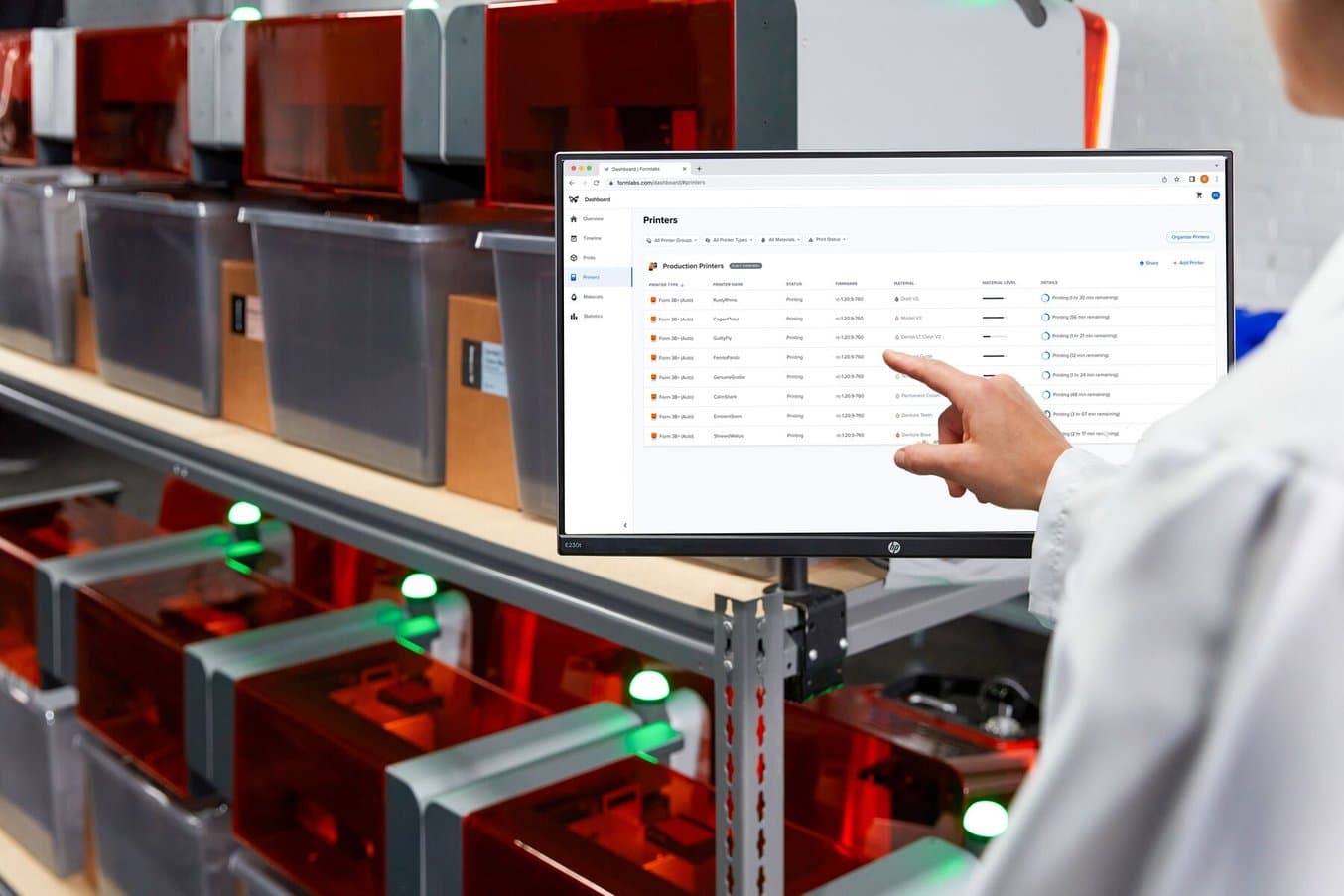
Within the group of 140 SLA printers at Formlabs MSB, there are smaller printer groups determined by material type. These groups are flexible and can change, such as when a new material is launched and demand shifts to new sample creation. Fleet Control enables users to send prints to Printer Groups, as opposed to choosing a specific unit, as well as manage a queue within a Group. It also shows an overview of how the entire production unit is functioning, allowing technicians to spot any inconsistencies before they become problems.
“Fleet Control has made managing production in our print farm incredibly easy. Having it up on a couple of touch screens allows our technicians to quickly recognize and deal with issues,” says Crane.
Pairing the organization and oversight abilities of Fleet Control with the production power of the Form Auto has led to large increases in productivity for Formlabs MSB. “Fleet Control paired with Form Auto has meant a significant increase in output of parts, but perhaps more importantly it has proven to increase our yield rate on the same parts when compared between Form Auto and traditional methods, because of less physical touches to the parts,” says Crane.
High Volume Printing Requires New Resin Solutions
With years of practice printing sample parts, the team at Formlabs MSB has resin refilling down to a science — they know exactly how many batches of each part can be made with a single resin cartridge, and when they need to switch in a new one. Those switching tasks are accomplished quickly and easily, but just like with part removal, when they’re multiplied across 140 printers, they can add up to a significant portion of the employees’ time. “One major part of the printer operator’s work is changing out resin cartridges. When you’re printing 440 parts a day, you need to change them out pretty often,” says Pauwels.
In addition to labor time, the number of empty cartridges begins to add up at this volume of printing, increasing storage needs and requiring disposal strategies.
We developed the High Volume Resin System to seamlessly deliver five liters of resin through an automated pumping system, enabling printers equipped with Form Auto to go through multiple printing batches with zero worker interaction. “Since the High Volume Resin System has five times the resin capacity we are interacting five times less with resin containers. This works out to five times fewer cartridge refills and five times fewer chances for spills,” says Pauwels.
The Automation Ecosystem Enables Mass Production
3D printing has been used for years for customized products, and with the growing adoption of 3D printed rapid tooling, is becoming more commonly used as a step in mass production processes. Until now, there hasn’t been a technology platform that can combine the customization power of 3D printing with the high throughput of mass production. The Automation Ecosystem bridges that divide, making customization more affordable by reducing labor costs, and making mass production more efficient by removing the time constraints of an average worker’s day.
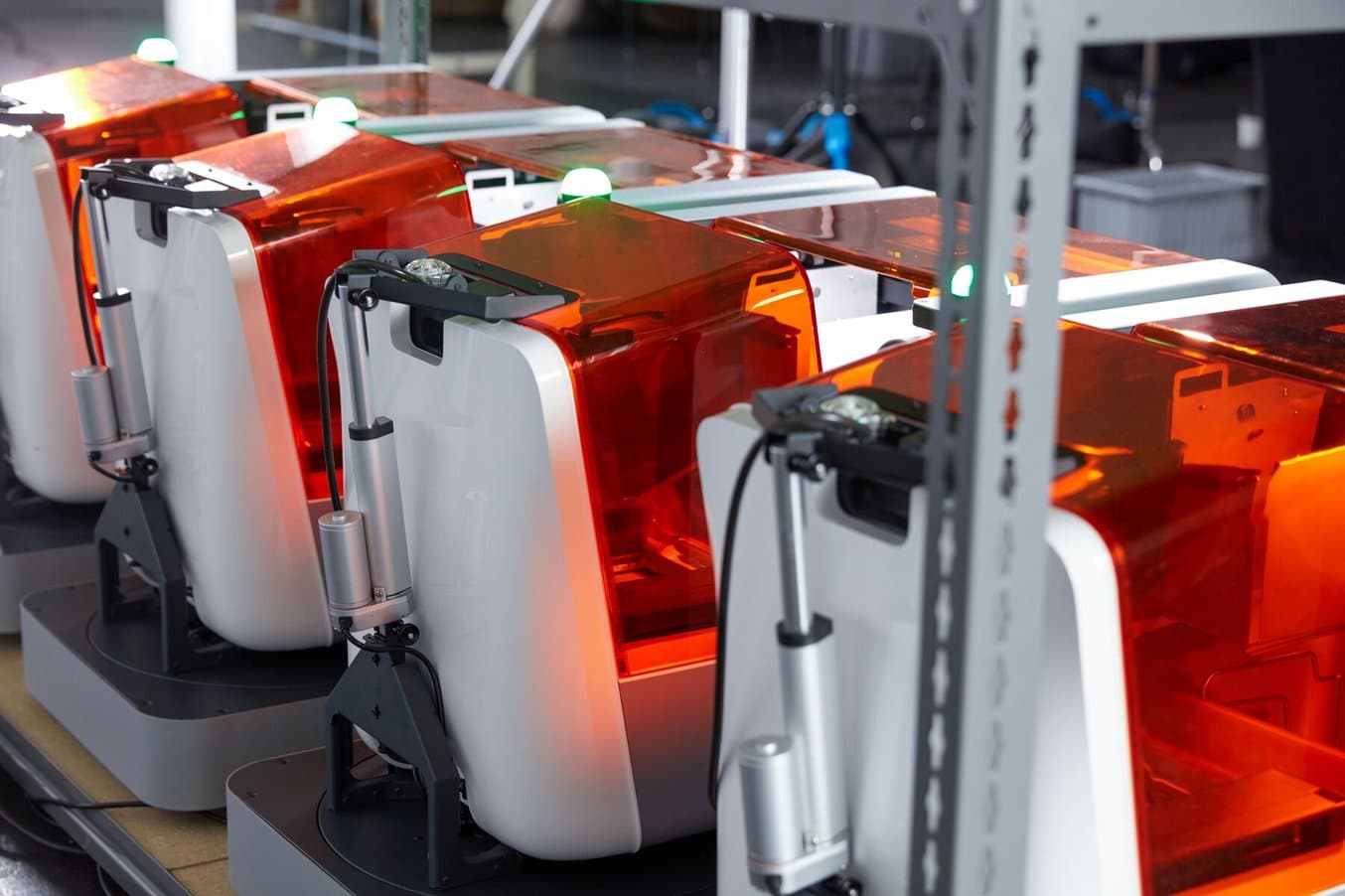
To date, Formlabs MSB has produced hundreds of thousands of parts, demonstrating the production capacity of the Form 3 Series printers and the consistency of Formlabs materials. As the demand for 3D printers and parts grew for Formlabs customers, it also grew for Formlabs internally. The Automation Ecosystem answers the need for efficiently scaled production, and there has been no better place than our own facility to prove its ability.
"The Automation Ecosystem has helped MSB cut labor per part by over 50% thanks to an increased throughput without added labor."
Andrew Crane, Operational Excellence Team
Being able to consistently print at this scale helps streamline Formlabs’ operations and supply chain, but it also creates a continuous feedback loop — by using our own products for production, we’re able to learn, develop, and iterate them, optimizing our business model and the technology upon which it’s founded.
